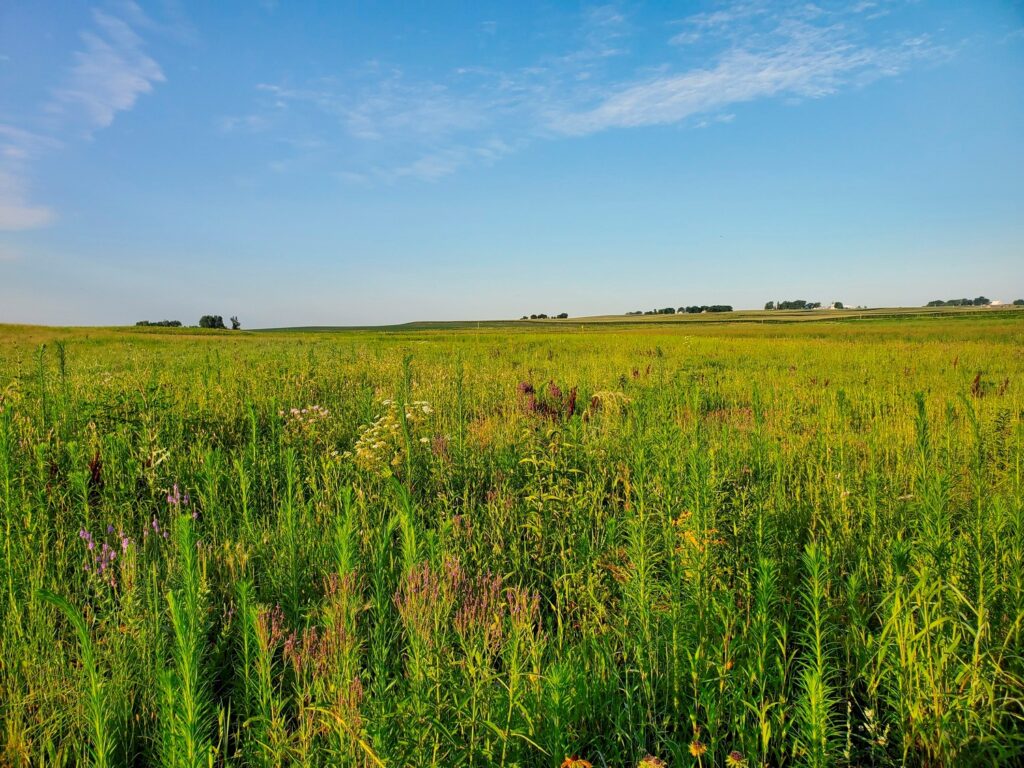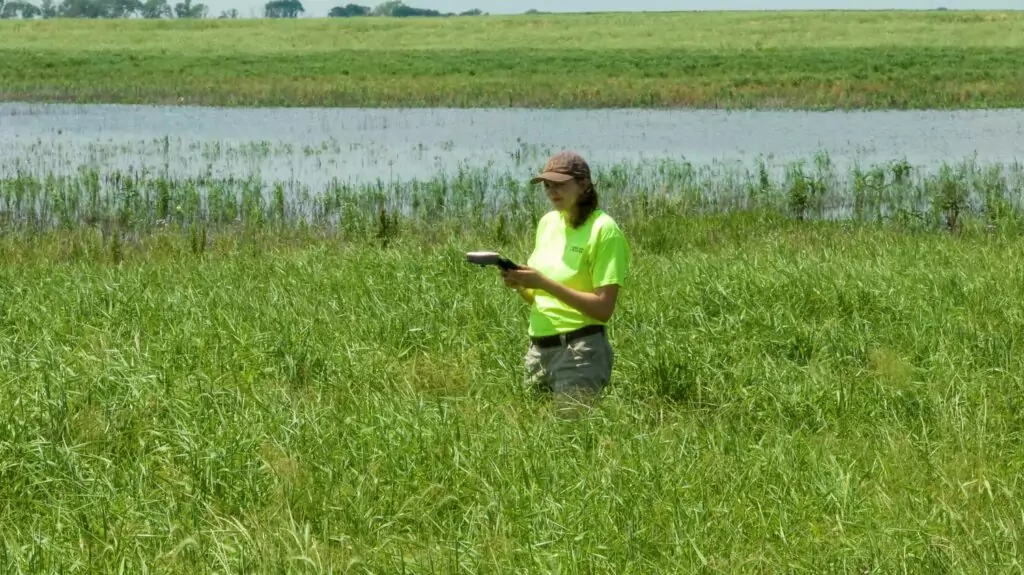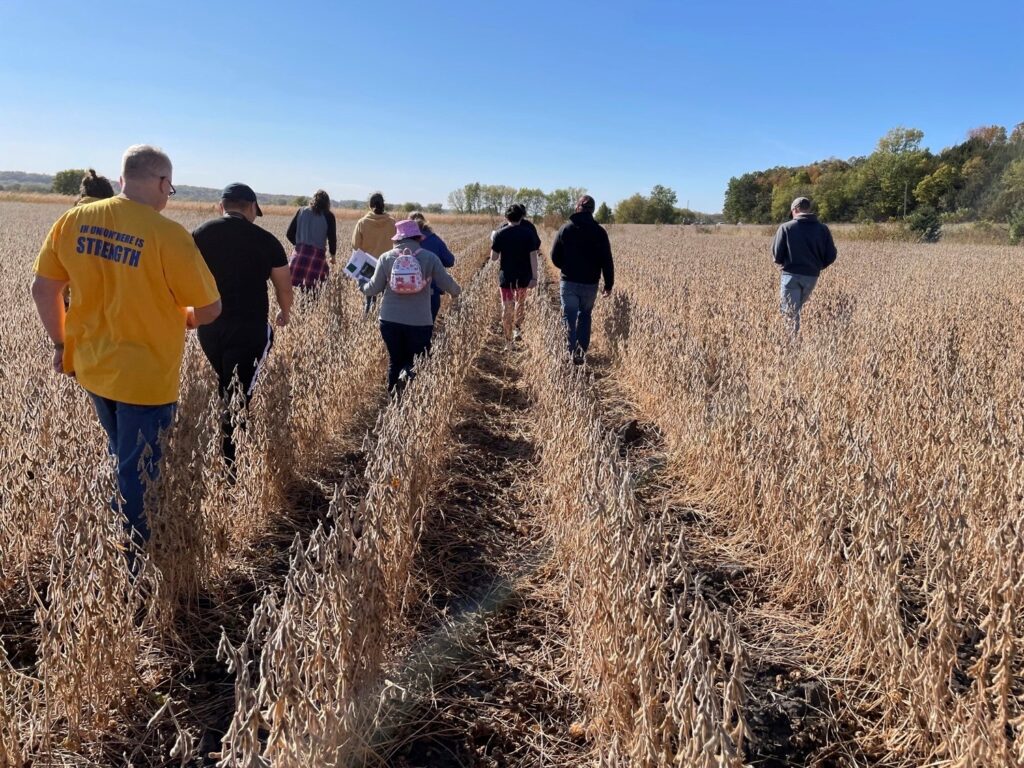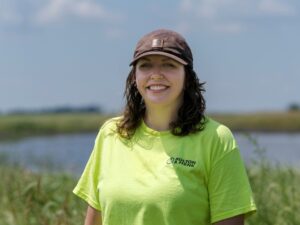Wetland Banking: Bringing Historic Wetlands Back to Life
With our minds racing through the hustle and bustle of the daily grind, the natural process of ecosystems often goes unnoticed in our everyday lives. Yet, these systems are imperative to keeping the world around us running smoothly. When an ecosystem’s routine is disrupted, its impact is noticed the most. If only one part of an ecosystem is negatively impacted, it can cause a ripple effect of disruptions across species, the food chain, water systems, and so much more.
Why Wetlands are Crucial to Our Ecosystem
Pollination is just one example of an ecological function we can’t afford to lose. Pollinators, including bees, butterflies, and other insects, contribute approximately $500 billion a year to global food production. Wetlands, a type of biome that provides many ecological functions, are invaluable. Water retention, water filtration, habitat for rare plants and animals, nursey for native fishes, soil retention, and erosion control are just a few ecological functions that healthy wetlands provide for humans. Minnesota is one of the few states with established state laws protecting historic wetlands. In 1991, state congress passed the Wetland Conservation Act (WCA), a policy that creates a no-net loss of total wetlands in Minnesota. While this is the land of 10,000 lakes, wetlands present are almost just as noteworthy.
Wetland Banking: A Method to Restore and Sustain Wetlands
As part of a Minnesota program to incentivize wetland restoration, wetland bank landowners can earn ‘credits’ based on the acres of land restored around an eligible wetland system. These credits can be sold into a market-based economy to offset impacts from developments in other parts of the state. Wetland bank restorations can include a variety of improvements, such as planting native shrubs and vegetation, changing water flow, or providing new habitat for organisms.
Each participating wetland site has a set of restoration goals established, which are then measured throughout five years of monitoring. The defining traits of wetlands (hydrophytic vegetation, hydric soil, hydrology) are also measured throughout this period. Monitors study the native plant diversity and percentage of invasive species, measure water levels throughout the growing season with hydrology wells, and conduct soil borings to explore the soil’s properties. As data is collected throughout the growing season, the landowner is informed on the number of invasive species and how to treat them, which is used to maintain a functional wetland. Through these methods of data collection, it can be determined if a wetland bank meets its restoration goals.
Once the bank has been restored to its highest potential, the bank will remain in conservation easement forever, meaning the land cannot be developed and must remain as a functioning stream restoration site. The landowner is responsible for managing the vegetation beyond the monitoring period.
Wetland Conservation at Stevensen Wetland Bank
Al Stevensen, owner of Stevensen Wetland Bank in Mankato, became familiar with the idea of wetland banking from his brother, who is on the board for the Nicollet County Conservation Club. From there, Bolton & Menk’s natural resources team was looped in as a consultant to help design a successful restoration.
To participate in wetland banking, restoration bank goals must be approved by both state and federal government. Bolton & Menk’s natural resources team bridged the gap between the landowners’ desires and government agencies’ legal tape through their vast knowledge of local city, state, and federal wetland policies. These restoration goals must be met for the credits to be released to the landowner, but sometimes, partial credit can be requested due to uncontrollable conditions like regional drought.

For the good of the surrounding community and the land itself, the goal of Stevensen Wetland Bank was to restore its ecological function back to its historic level, including focus on water retention, soil erosion control, water filtration, and native habitat. Addie Theis, natural resources technician at Bolton & Menk, explained that “even as one of the smallest wetland banks our team has been a part of, with any site, you still have to be conscience of neighbors’ land and water usage.” Before diving into any restoration, plans need to account for any surrounding areas that may impact the current project.
Monitoring and Measuring Wetland Sites
Monitoring restored sites uses a variety of new technologies to provide landowners useful data to help manage their wetlands. One of these technologies is GIS, which collects data in a landscape, then plots it on a map to measure how a restored plant community is developing. Many maps can be created to represent different data sets, such as elevation, historic land cover, property lines, soils, known rivers, and even more.

“In my time with the natural resources group, this is the first bank I got to see all the way through. I was able to measure the wetland during its final two years of monitoring and now I get to witness this beautifully restored site,” said Addie.
As of spring 2023, this project was officially complete, meaning the landowner collected all the available credits this bank could produce. To keep the wetland running at its current restored states, the landowner will continue to manage native vegetation in the future.
Student Involvement in Stevensen Wetland Bank
Today, Al Stevensen still lets Addie use his wetland site even though the site is no longer being monitored. “In the spring and fall semesters, I bring students from Minnesota State University, Mankato out to the Stevensen Wetland Bank for seasonal field trips. This allows students studying agriculture and ecology to see restoration occurring locally,” said Addie. As a bonus, this hands-on learning opportunity for students counts as an in-field lab credit.
Through her field trips, Addie emphasizes the interdisciplinary world of wetlands and how GIS, biology, geology, engineering, and environmental policy are all important topics for working in this field. When students visit a field site, they get to see first-hand the jobs people from their same program have now, exposing them to post-graduation job opportunities.
“My favorite part of hosting these field trips is talking with the students about what they want to do for a career after school, because I was in their shoes less than a decade ago, overwhelmed and stressed about which job would work for me. I hope showing my position gets students excited about future careers,” Addie shared.

Future Impacts of Restored Wetlands
When the natural hydrology of a site and native plant vegetation are returned to their natural states, it doesn’t take long for the wildlife to return too. “After one year, most of our Minnesota wetland banks establish a mating pair of trumpeter swans and a high diversity of shoreline and waterfowl species,” explained Addie.
With more than 70% of Minnesota land owned by private citizens, successful restorations must include private landowners to help restore ecological function throughout the state. This provides a unique opportunity for wetland landowners to restore portions of their own land not only for financial incentives, but for intrinsic value.
Through bank design, water engineering, yearly monitoring and drone imagery, permitting, and credit release, the Stevensen Wetland Bank restoration site is a small piece of the larger puzzle for improving river water quality along the Minnesota River Valley.
Many county soil water conservation districts provide opportunities to work with landowners in restoration. You can learn more about working with landowners through the MASWCD website.
 Addie Theis is a natural resources technician who started her career at Bolton & Menk, Inc. in 2020. Her areas of expertise include tallgrass prairie ecology, native Minnesota biomes, botany, and plant identification. Before European settlement, Minnesota had 18 million acres of prairie. Today, less than 1 percent of that native land remains. Addie is passionate about protecting what is left and keeping our land and water clean.
Addie Theis is a natural resources technician who started her career at Bolton & Menk, Inc. in 2020. Her areas of expertise include tallgrass prairie ecology, native Minnesota biomes, botany, and plant identification. Before European settlement, Minnesota had 18 million acres of prairie. Today, less than 1 percent of that native land remains. Addie is passionate about protecting what is left and keeping our land and water clean.
